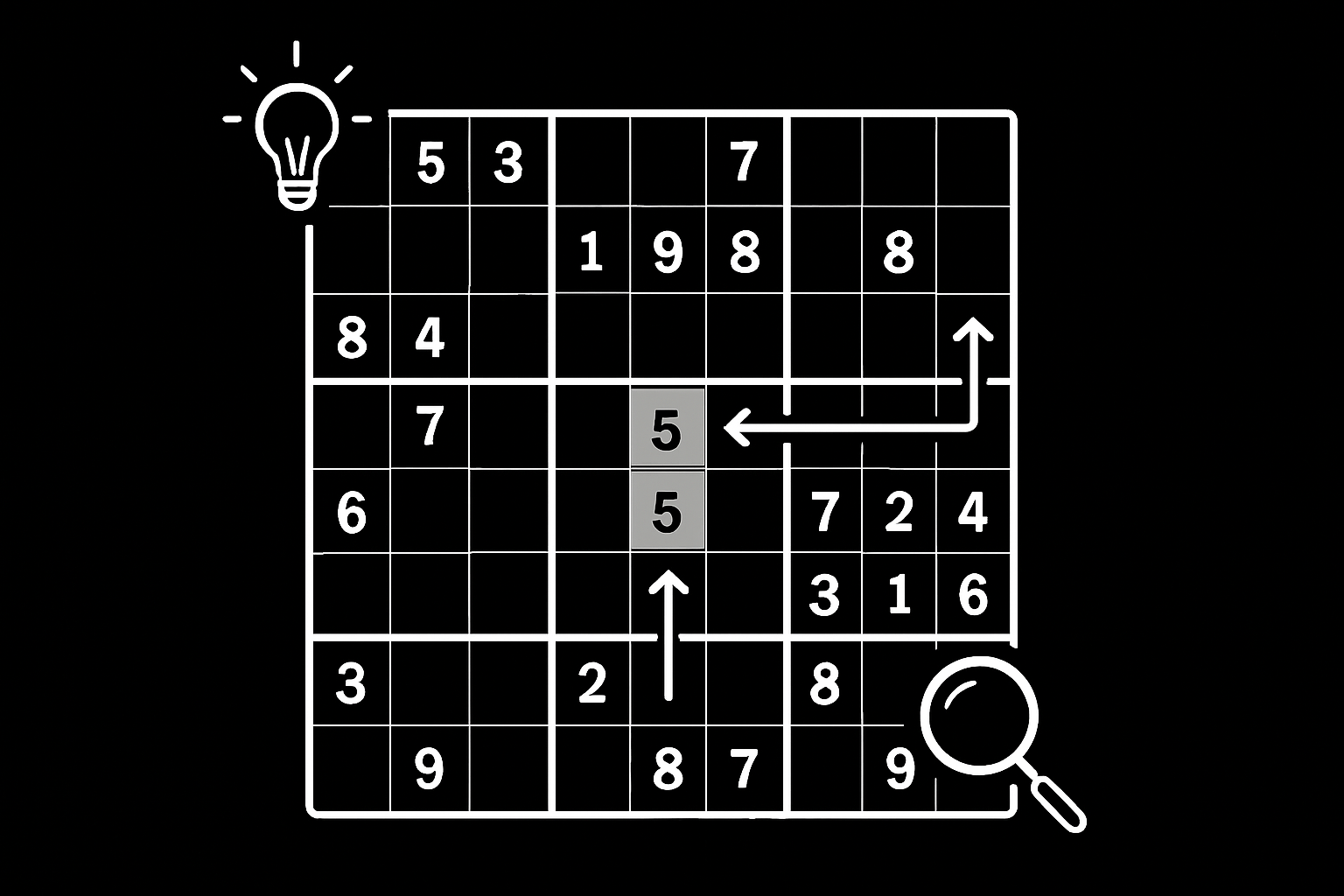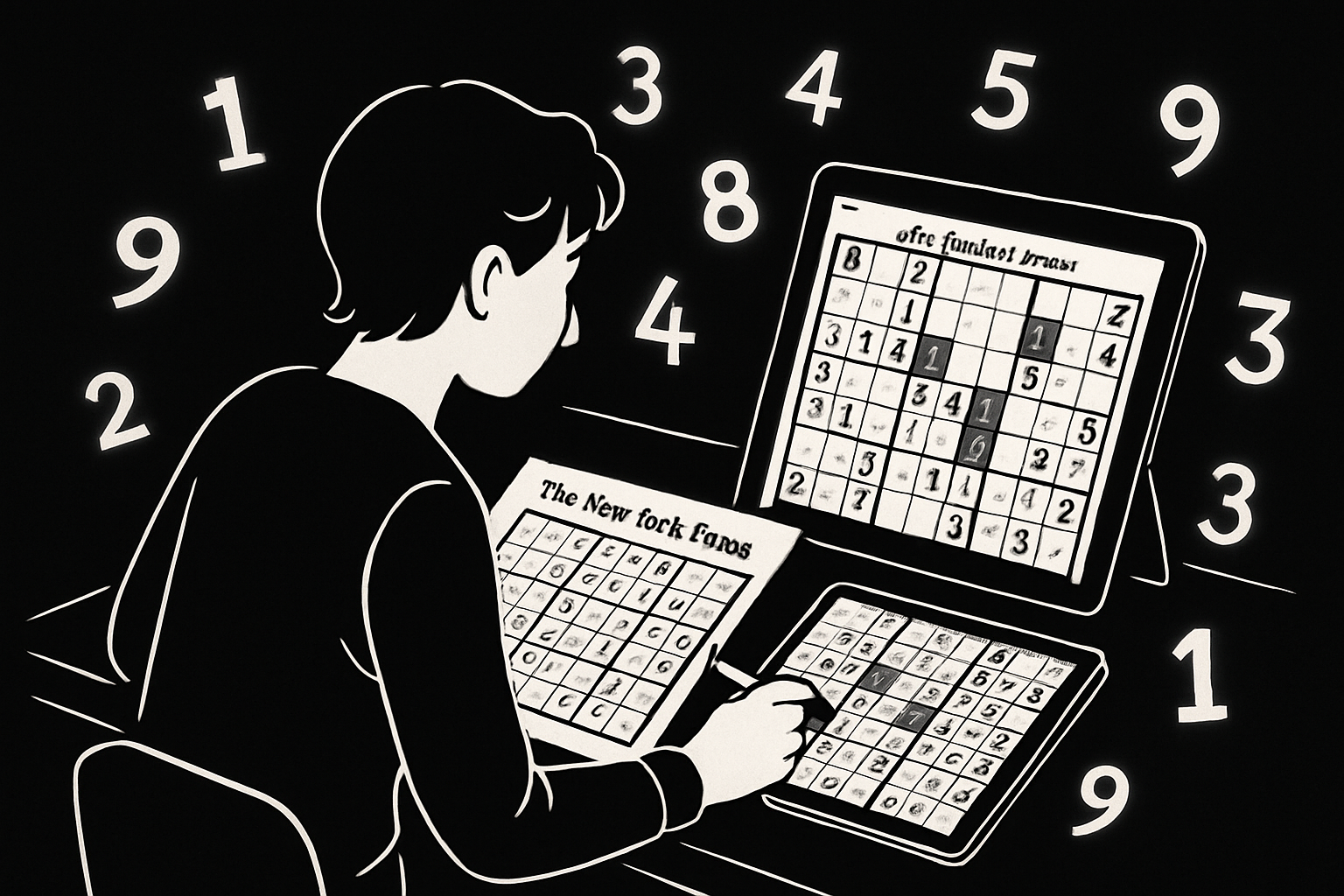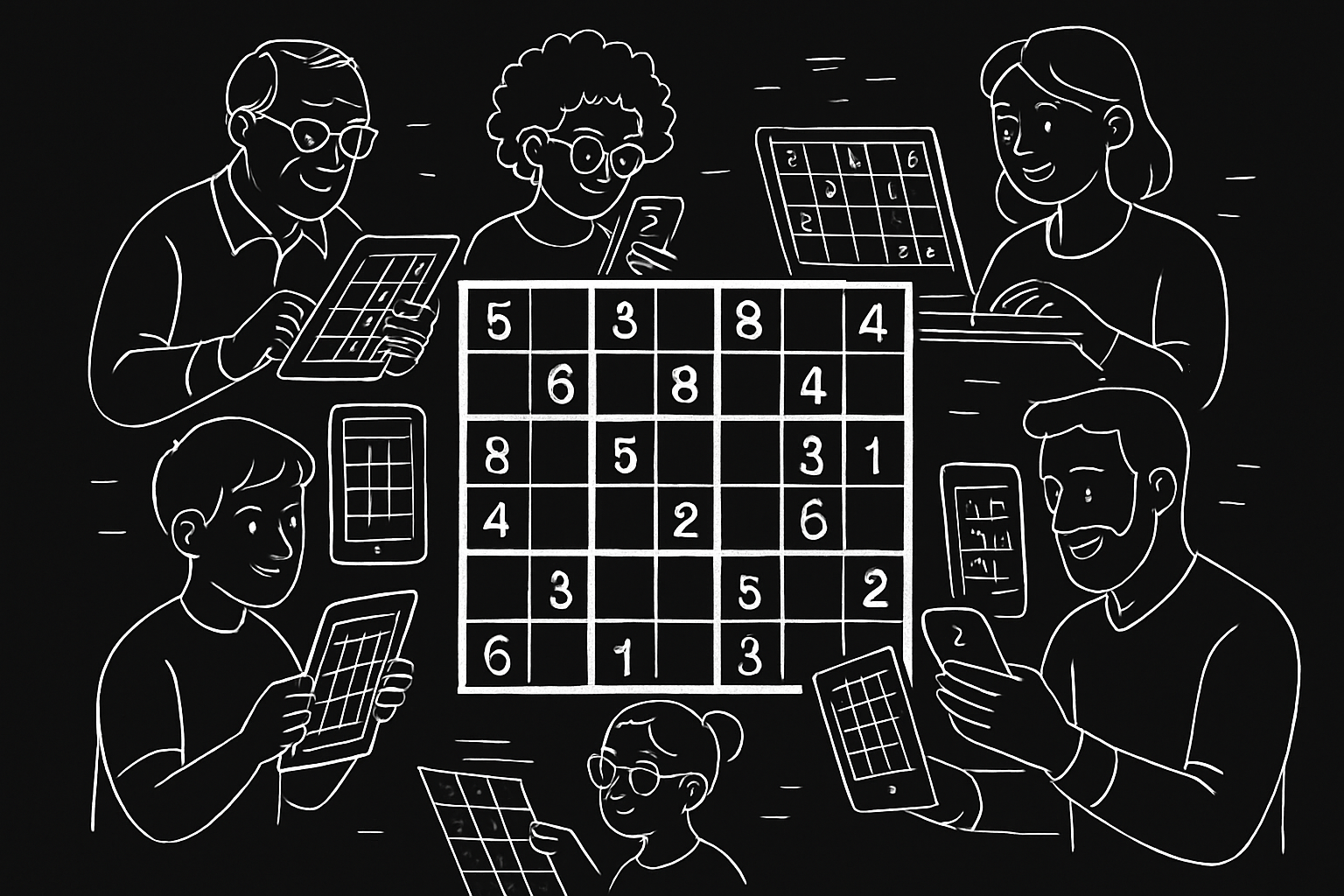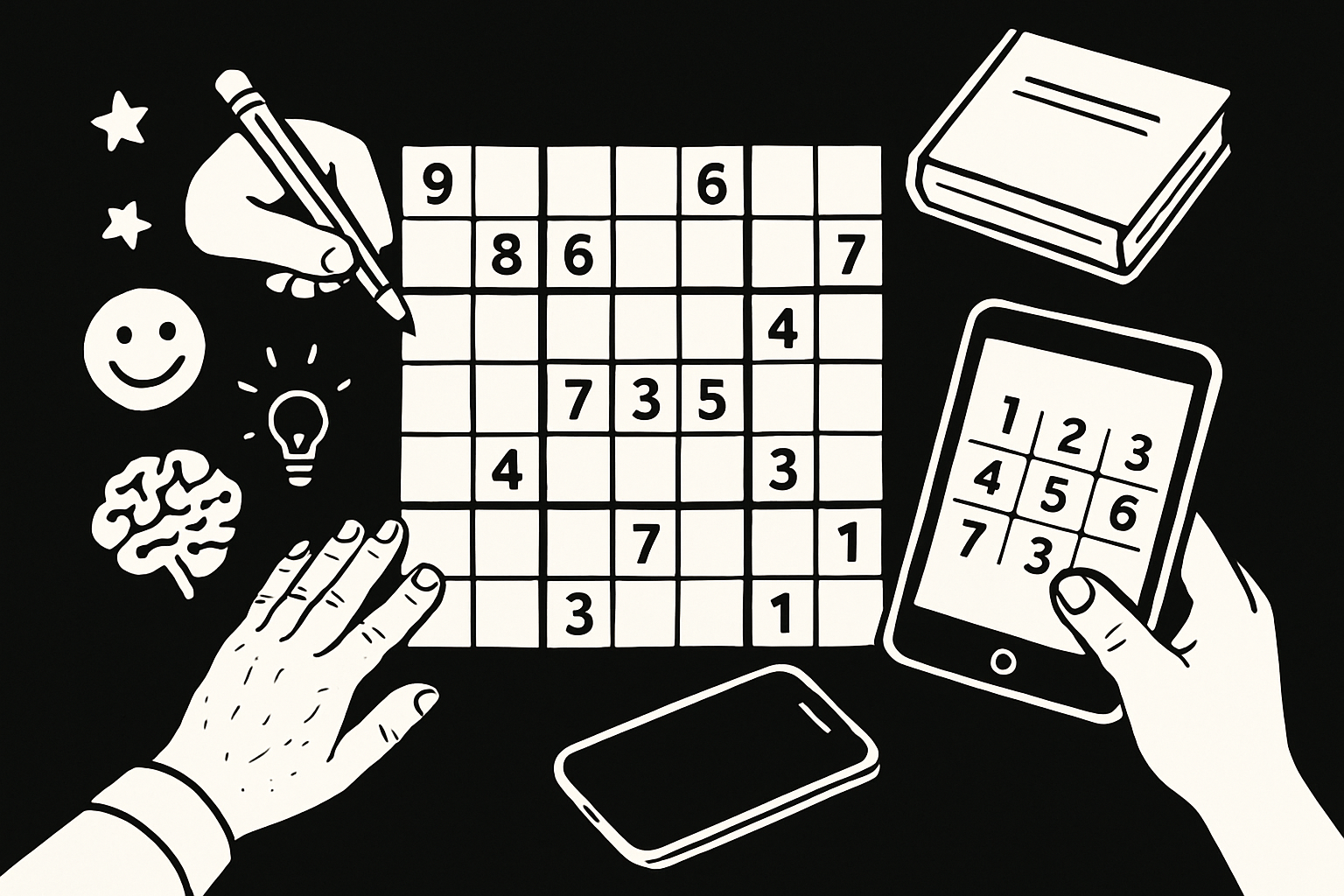Have you ever wondered how a simple puzzle like nyt sudoku easy can sharpen your mind and provide hours of relaxing entertainment? As more people discover the joy of these puzzles, nyt sudoku easy is becoming a favorite choice for both fun and mental exercise.
This guide is designed just for beginners, walking you step-by-step through the essentials of mastering nyt sudoku easy in 2025. You’ll uncover basic rules, practical strategies, a clear solving process, common mistakes to avoid, and top resources for ongoing improvement.
Ready to boost your brainpower and enjoy solving? Let’s get started!
Understanding Nyt Sudoku Easy: Rules and Basics
If you’ve ever wanted to dip your toes into the world of Sudoku, nyt sudoku easy is the perfect place to start. These puzzles are featured daily in The New York Times and have become a go-to brain teaser for thousands of online solvers every day. There’s a reason nyt sudoku easy is so popular: the format is welcoming, logical, and designed to help beginners build their confidence with each puzzle.
At the heart of every nyt sudoku easy puzzle is a 9×9 grid, divided into nine smaller 3×3 boxes. Your mission? Fill the grid so that every row, every column, and each 3×3 box contains the numbers 1 through 9, with no repeats in any direction. You’ll notice some numbers are already filled in—these are your clues. The rest of the spaces are blank and ready for your logical deduction.
Here’s a quick look at the core rules:
| Rule | Description |
|---|---|
| Grid Size | 9 rows x 9 columns, divided into 3×3 boxes |
| Numbers Used | 1 to 9, each must appear once per row, column, and box |
| No Repeats | No number can repeat in any row, column, or 3×3 box |
| Starting Clues | Some cells pre-filled to guide your solving |
| Logical Deduction | Use logic, not guessing, to fill in the blanks |
What sets nyt sudoku easy apart from harder versions? For starters, easy puzzles offer more pre-filled numbers, so you’re never overwhelmed by blank spaces. The logical steps are more straightforward, and you’ll find that using basic strategies will often lead you right to the solution. Unlike advanced variants, you won’t need complex techniques—just observation and steady thinking.
Let’s break down a sample nyt sudoku easy puzzle. Imagine a grid where the first row already has the numbers 1, 2, 3, and 5 filled in. Your job is to look at each blank cell and, using the surrounding numbers, figure out which digits are missing. As you scan the grid, you’ll spot places where only one number fits. This is the essence of nyt sudoku easy: steady progress through simple deduction.
If you ever feel stuck, remember that guessing is discouraged. The true satisfaction of nyt sudoku easy comes from using logic to unlock each cell. Experts agree that relying on deduction, rather than hunches, helps you avoid mistakes and improves your skills much faster.
Did you know that nyt sudoku easy puzzles are among the most played online? Every day, thousands of new and returning players test their minds and sharpen their focus. For beginners, the appeal is clear: you get instant feedback, can track your improvement, and never feel lost thanks to the friendly format.
Here are some key benefits for new solvers:
- Low barrier to entry—no advanced math or expertise needed
- Clear sense of progression as you fill in more numbers
- Immediate feedback when you complete a row or box
- Opportunity to build logical reasoning and pattern recognition
If you’re eager to see sample grids and learn more about the step-by-step process, check out this detailed Nyt Sudoku puzzle guide for practical tips and visual examples.
In short, nyt sudoku easy offers a welcoming, structured way to challenge your brain. With a bit of practice, you’ll find yourself solving puzzles faster and with greater confidence. Why not try your hand at a puzzle today and see how quickly you can master the basics?

Essential Techniques and Strategies for Beginners
Getting started with nyt sudoku easy is all about building a solid foundation of simple, repeatable strategies. The right techniques not only make solving puzzles more enjoyable but also help you progress much faster. Let’s break down the four core strategies every beginner should master.

Scanning and Crosshatching
The first step in tackling nyt sudoku easy puzzles is scanning the grid. This means looking across each row, column, and 3×3 box to spot missing numbers. Scanning helps you identify where numbers are already placed, making it easier to find obvious gaps.
Crosshatching takes scanning a step further. You systematically check intersecting rows and columns to see where a particular number can go. For example, if you’re looking for where “5” belongs in a box, crosshatching lets you rule out spots already containing “5” in the same row or column.
- Scan each row and column for missing digits.
- Use crosshatching to narrow down possibilities.
- Fill in any cells where only one spot remains for a number.
Statistically, about 70% of nyt sudoku easy puzzles can be started using scanning alone. For a more detailed breakdown of these basics, check out this How to play Sudoku basics guide.
Penciling In Candidates
When you’re unsure about a cell’s correct number in nyt sudoku easy, pencil marks are your best friend. By writing down all possible numbers that could fit into a cell, you keep track of options without committing to a guess.
This approach keeps your puzzle organized and reduces the risk of errors. As you fill in more numbers, you can erase candidates from other cells, making the solving process much smoother.
- Write small numbers in empty cells to represent candidates.
- Update pencil marks as you fill in more cells.
- Focus on rows or columns with fewer possibilities.
Studies show that beginners who consistently use penciling in candidates solve nyt sudoku easy puzzles up to 30% faster. This method is especially useful when you hit a tricky spot and need to see your options clearly.
The Process of Elimination
Elimination is a logical cornerstone for nyt sudoku easy. By looking at the filled cells in each row, column, and box, you can rule out certain numbers for any empty space.
For example, if a row already contains 1, 3, 4, and 8, you know those numbers can’t go in the empty spots. Narrowing down options like this is much more reliable than guessing, which often leads to mistakes.
- Review each cell’s candidates and cross off numbers already present in its row, column, or box.
- Focus on cells with the fewest possible candidates.
- Use elimination to break through blocks and progress steadily.
According to experts, 90% recommend elimination as the main strategy for nyt sudoku easy. It’s a methodical process that pays off with fewer errors and a more satisfying solving experience.
Recognizing Patterns and Common Traps
Pattern recognition is what separates new solvers from those who quickly master nyt sudoku easy. Look for “naked singles”—cells with only one candidate left—or “hidden singles,” where only one cell in a row, column, or box can have a particular number.
Avoid common traps, like placing duplicate numbers in a row or missing obvious singles because you’re rushing. Spotting these patterns makes puzzles much easier and helps prevent frustrating mistakes.
- Naked singles: Only one candidate in a cell.
- Hidden singles: Only one cell in a unit can take a number.
- Double-check for duplicate numbers before moving on.
By practicing pattern recognition, you’ll gradually move from beginner to confident nyt sudoku easy solver. Remember, patience and consistency are key to improvement.
Step-by-Step Guide: Solving Nyt Sudoku Easy Puzzles
Ready to tackle your first nyt sudoku easy puzzle? Let’s break down the entire solving process into manageable steps. Whether you’re brand new or want to sharpen your logic, these strategies will help you move from a blank grid to a completed puzzle with confidence.

Step 1: Analyze the Puzzle Grid
Start by taking a close look at your nyt sudoku easy puzzle. Notice the 9×9 grid, which is divided into nine 3×3 boxes. Some numbers are already filled in—these are your clues.
Scan the grid to see which rows, columns, or boxes have the most numbers filled. These areas often provide the best starting points because they offer more information for logical deduction.
For example, if a box already contains six numbers, you only need to determine three more. Focusing here can lead to quick wins and build your confidence as you solve nyt sudoku easy puzzles.
Step 2: Fill in Obvious Numbers
Now apply the scanning and crosshatching techniques. Look across each row and column to spot where only one number can logically fit.
If a row is missing just a single number, fill it in immediately. The same goes for columns and boxes—sometimes, the placement is obvious once you check what’s already present.
Let’s say you’re working on a nyt sudoku easy puzzle and see a row with every number except 7. Since 7 hasn’t appeared yet in that row, and no other cell in the row’s box contains it, you can confidently write 7 in the empty space.
Step 3: Use Pencil Marks for Candidates
For trickier spots, jot down all possible numbers for each empty cell using small pencil marks. This is especially useful in nyt sudoku easy puzzles when multiple numbers could fit in a cell, but you’re not sure which is correct yet.
As you fill in more numbers, keep updating your pencil marks. If a candidate is no longer possible due to a new entry in the same row, column, or box, erase it. This habit keeps your puzzle organized and prevents confusion.
Try penciling in candidates for an entire 3×3 box. You’ll see patterns emerge and often spot places where only one number is left, making your next move clear.
Step 4: Apply the Process of Elimination
Elimination is your secret weapon for solving nyt sudoku easy puzzles logically. For each empty cell, rule out numbers that already appear in the same row, column, or box.
Let’s walk through an example. Suppose you have a cell in the bottom-left box with candidates 2, 5, and 8. After checking the corresponding row and column, you notice 2 and 5 are already present. That leaves 8 as the only valid option.
Using elimination means you never have to guess. With practice, this step becomes second nature and dramatically increases your accuracy as you progress through nyt sudoku easy grids.
Step 5: Spot and Fill Hidden/Naked Singles
Some cells in nyt sudoku easy puzzles might have only one candidate left (naked singles). Others may have a number that appears only once among all the candidates in a row, column, or box (hidden singles).
Keep an eye out for these situations. When you find a naked single, fill it in immediately. For hidden singles, scan the pencil marks in a section—if a number appears only once, that’s its home.
Spotting singles is a powerful tool that helps unlock stuck sections and moves you closer to completing your nyt sudoku easy puzzle.
Step 6: Double-Check for Errors
Before you rush to finish, pause to review your progress. In nyt sudoku easy puzzles, it’s common to make small mistakes, like accidentally duplicating a number in a row or missing an obvious placement.
Check every row, column, and box to ensure each contains the numbers 1 through 9 without repeats. If you spot an error, backtrack and correct it right away. This careful approach prevents frustration later and builds strong habits for solving future nyt sudoku easy challenges.
Step 7: Complete the Puzzle and Review
As you fill in the remaining cells, combine all the techniques you’ve learned. Take your time, and don’t be afraid to revisit earlier steps if you get stuck.
Once every cell is filled, do a final sweep of the grid. Confirm that each row, column, and box contains all numbers 1-9, with no duplicates or blanks. This review is crucial for accuracy.
For beginners, the average completion time for a nyt sudoku easy puzzle is 8 to 15 minutes. With steady practice, you’ll improve your speed and confidence. Want to try your new skills right now? Explore a variety of Easy Sudoku puzzles online for instant practice and more nyt sudoku easy challenges.
Common Mistakes Beginners Make (and How to Avoid Them)
Jumping into a nyt sudoku easy puzzle can be exciting, but many beginners stumble over the same hurdles. Understanding these common mistakes—and how to sidestep them—can make your Sudoku journey much smoother.
1. Guessing Instead of Using Logic
Many newcomers to nyt sudoku easy puzzles are tempted to guess when they get stuck. While it might seem like a shortcut, guessing often leads to errors that can ruin the entire puzzle. Instead, focus on logical deduction and simple strategies. If you’re unsure how to proceed, check out a comprehensive guide to Sudoku solving techniques for step-by-step help.
2. Overlooking Obvious Numbers
It’s easy to miss clear solutions when you rush or get distracted. Double-check each row, column, and box for cells that can only hold one possible number. Slowing down and scanning the grid methodically will help you avoid this classic nyt sudoku easy misstep.
3. Misusing or Forgetting to Update Pencil Marks
Pencil marks are a lifeline in nyt sudoku easy puzzles, but they’re only helpful if you update them as the puzzle changes. Leaving outdated candidates can cause confusion and lead to mistakes. Always erase or adjust pencil marks when you fill in a new number.
4. Creating Duplicate Numbers
Accidentally placing the same number twice in a row, column, or box is a common error. After every few moves, review your grid for duplicates. This habit can save you from frustrating backtracking later on.
5. Skipping Logical Steps
Some players skip essential steps, jumping ahead without verifying their logic. This can result in dead ends or unsolvable puzzles. Stick to a consistent process: scan, pencil in, eliminate, and only fill numbers when you’re certain.
Quick Reference Table: Mistakes & Solutions
| Mistake | Solution |
|---|---|
| Guessing | Use logic and proven techniques |
| Overlooking numbers | Slow down and rescan the grid |
| Outdated pencil marks | Update marks after every entry |
| Duplicate numbers | Review for repeats after each move |
| Skipping steps | Follow a step-by-step solving process |
Real-Life Example:
A beginner working on a nyt sudoku easy puzzle guessed a number in a tricky cell. Later, they realized multiple rows contained duplicate 7s, forcing them to erase large sections and start over. By sticking with logic and updating pencil marks, they finished the next puzzle smoothly.
Consistency and patience are your best allies. With practice and attention to these pitfalls, you’ll soon find nyt sudoku easy puzzles becoming more enjoyable—and your skills steadily improving.
Recommended Resources for Practicing Nyt Sudoku Easy
Looking to sharpen your skills on nyt sudoku easy puzzles? The right resources make a huge difference, whether you prefer online platforms, mobile apps, books, or printable puzzles. Here’s a guide to the best places to practice and improve.
Online Platforms and Mobile Apps
Online platforms and mobile apps offer instant access to nyt sudoku easy puzzles, making daily practice simple and fun. The New York Times’ official Sudoku site is a popular choice, but many solvers explore other platforms for extra features and variety.
Let’s compare a few top options:
| Platform/App | Features | Difficulty Range | Hints/Stats |
|---|---|---|---|
| NYT Sudoku | Clean UI, daily puzzles | Easy–Hard | Yes |
| Sudoku247Online | Variety, printable options | Easy–Expert | Yes, progress track |
| Sudoku.com | Customizable, themes | Easy–Expert | Yes |
Many apps now let you track your nyt sudoku easy progress, set daily goals, and get hints when you’re stuck. For a comprehensive look at the best digital options, check out this Sudoku apps and platforms overview, which highlights features, strengths, and user experiences across the top platforms.
Books and Printable Puzzles
Prefer solving nyt sudoku easy puzzles with pencil and paper? Sudoku books and printable sheets are perfect for offline practice, travel, or screen-free time. Top-rated books like “The New York Times Easy Sudoku” and “Sudoku for Beginners” focus on clear instructions and gradual difficulty increases.
Benefits of printable puzzles include:
- Easy to take on the go
- Great for group challenges or family fun
- No device required
You can find free printable nyt sudoku easy puzzles on the NYT website, Sudoku247Online, and puzzle blogs. Many books also include answer keys for self-checking and learning from mistakes. Keep a few printables handy for whenever inspiration strikes!
Sudoku247online.com: Your Go-To Resource for Sudoku Mastery
If you’re serious about mastering nyt sudoku easy, Sudoku247online.com is a fantastic resource. The site offers free expert guides, curated puzzle lists, and printable puzzles designed for all skill levels.

Beginners benefit from step-by-step tutorials, up-to-date strategies for 2025, and a welcoming community. The platform also provides progress tracking, hints, and daily challenges to keep you motivated. Whether you want to play nyt sudoku easy online or print puzzles for offline use, Sudoku247online.com supports your journey every step of the way.
Now that you’ve got the basics down and some real strategies to tackle Nyt Sudoku Easy, why not put your new skills to the test? Practicing is the best way to turn those beginner tips into second nature—and you’ll start noticing your confidence grow with every puzzle you solve. If you’re ready for a fun, brain-boosting challenge, you don’t have to wait. Let’s jump in together and see how far you can go—head over and Play Sudoku Online! You might surprise yourself with how much you’ve learned!




